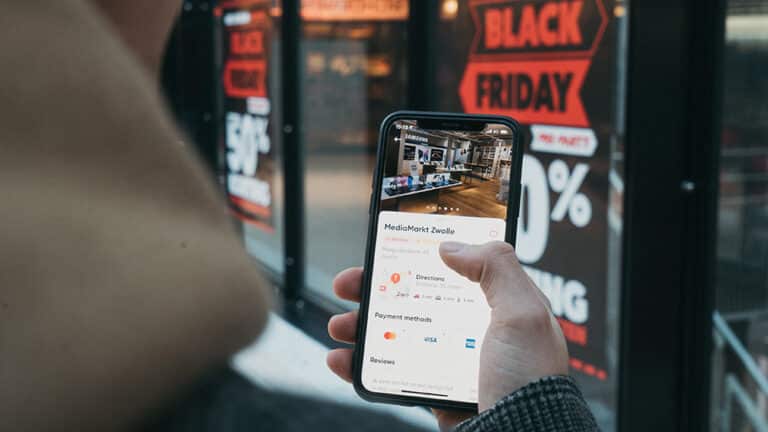Set relevant goals for your business
A common trap linked to digital marketing in general and social media in particular is the constant pursuit of conversion and fast results. Lots of players want to reach your target groups and the competition is fierce. Common denominator? Everyone wants the channels to generate a strong return – but it is not easy, just like everything else requires hard work and a clear strategy.
To ensure that your investment not only produces short-term results but also contributes to increased long-term profitability, it is necessary that you identify and map your customer journey. What does the target group’s behavior and needs look like, both digitally and analogously? What touch points do you have with the customer before, during and after a purchase decision? Do you need to strengthen brand awareness to reach new target groups and potential buyers? Or is it about increasing engagement and conversion among existing customers?
By answering these types of questions, you finally have your answer to where social media can have the greatest impact and create the most value for you
Target groups
Assumptions are a dangerous game for marketers. Make sure to start from the inside by building your target audiences on reliable and up-to-date data. Maybe you have been good at collecting valuable customer data, invested in a lot of customer surveys or built a high number of followers on your channels. Great!
Then, if possible, choose your most valuable data to build on. Are your existing customers you want to analyze and process further? Or do you need to start a completely new exploration work to reach the next generation of customers and how can you then map patterns and behaviors of existing buyers?
Regardless of the target image, start with your lowest hanging fruits – that is, those that already generate the most revenue or are most loyal to your services. Then expand the target group, but always start digging where you stand. It pays off and gets cheaper in the long run, we promise!
Determine your most important metrics
It literally swarms with KPIs in our digital media landscape. CPI overload, as we usually say. CTR, ROAS, engagement and CPM to name a few. We can now measure almost anything when it comes to advertising, which has suddenly made it easier than ever to measure just for the sake of measuring. It is simply a matter of finding a nice balance between small and large KPIs to avoid meaningless measurements.
So beware of forgetting the helicopter perspective! Focus on profitability, market share, LTV and then scale down the metrics. Again, to be able to set fair goals, start from the inside. What are your business goals and what role does social media play in your customer journey? If the channels aim, for example, at prospecting new target groups, metrics such as range, frequency and commitment will be important. If, on the other hand, we see that it is conversion that is important, we must of course look at traffic, purchases and the number of leads.
Ps. For a successful measurement, it is of course important that implementations of your measurement tools and tracking pixels are set up correctly. Making decisions on the wrong data is not something we recommend.
Do your homework
Don´t start from scratch, it is a good idea to analyze your closest competitors and players you are looking up to, businesses that may have taken a similar position but in a completely different industry.
What do their communication and campaign efforts look like? How do they differ organically and paid? What conclusions and / or parables can we draw about their target groups? Seek inspiration and make your mark on the insights.
A good tool for just this is the Facebook Ad Library, where Facebook offers full transparency in the advertising world on their platform. Enter the company you are curious about and vips – there you have their active or inactive ads!
Another tip is to use Google trends as a routine to compare your brand awareness with that of your competitors. How different industry terms rhyme with your brand as a search topic. Or why not examine how your own brand differs in knowledge, if you are now in more markets? Super smart!
Have a one-second strategy
Now that we know what purpose the channels have and what role they should play in our business plan and have undertaken a cruel research, we have much better conditions for creating relevant content.
You have an average of 1.7 seconds to capture the target group’s attention. So what do you say?
MMA, the mobile marketing association in EMEA, conducted a study to investigate what time is actually required for an ad to make an impact. They tested how long an ad must appear on the screen to attract attention and cognition.
Neuroscience and eye-tracking tests were performed on men and women on different platforms and the results showed that it takes less than half a second for the brain to respond to a mobile ad. Ads on mobile devices received a faster response and stronger recognition than on desktops. Of course, more well-known companies received a stronger reaction and recognition, but there was no difference when they looked at how ads got attention.
The test also showed that video ads generate a stronger emotional response earlier than in a static image ad. The study thus ensures the importance of having a one-second strategy and learning which expressions work for you by having a testing approach to the work. Here is a checklist to use:
- Make sure the first scenes and messages count.
- Color and contrast are very important. Make conscious choices about this
- Test attention, visual effects and complexity.
- Use faces and people (where appropriate with the message).
- Illuminate the recipient’s primary needs where possible.
- Use moving material, even if the image is easily consumed.
- Customize the ads for the complexity of the platform.
- Customize for brand recognition.
Optimize your campaign work
Digital advertising is growing every year. According to Facebook’s annual trend study for holidays 2019, 43% of users started shopping before Christmas in November or earlier in 2018 and they believed 2020 to be the year when digital media purchases pass traditional. As usual, there are a lot of intense campaign periods and in particular the competition peaks during Q4 with both Black Friday, Singles Day, Cyber Monday and the Christmas shopping around the corner. In order to optimize your campaign work and get the highest possible return, there are three phases you must take into account:
1. Preparations
- Review last year’s campaign performance and ad performance
- Ensure your technical set-up and tracking
- Build relevant target groups, test your content and set up your product catalogs
- Make sure you book your promotions well in advance, especially if you are planning a reach & frequency campaign
2. Create momentum and maximize sales
- Prospect new target groups based on previous data and custom audience
- Go wide on more channels and engage any ambassadors to spread your message
- Scale your audiences by building lookalike audiences based on purchases
- Work smart with retargeting and dynamic product ads for people who have visited your website
3. Optimize the effect of the effort
In order to maximize the effect of your investment, there are all opportunities to expand the business by offering new products or related offers and further consolidate loyalty to those who have purchased by continuously exposing the brand in a value-creating context for each target group.
Good luck with everything and do not forget that social media is a changing environment. Testing, learning and developing are the key words to succeed in the long run. If you have any questions, we’re just a call away! 🚀
Do you want to stay updated? Then subscribe to our newsletter!





